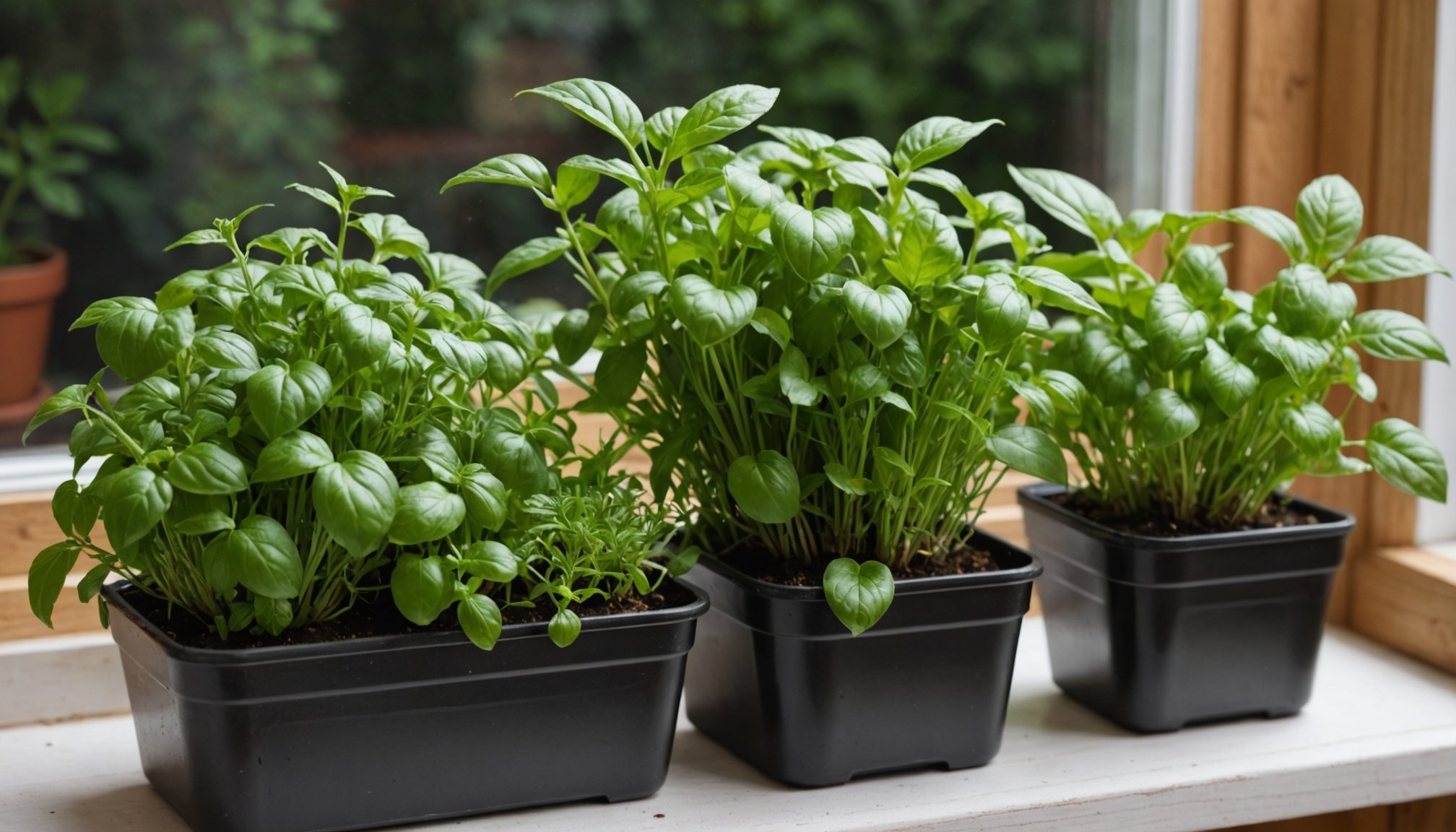Growing herbs indoors can be a rewarding and enriching experience. Not only do they enhance your culinary creations, but they also bring a touch of nature into your home. With the right knowledge and tools, anyone can cultivate a vibrant garden of plants right in their kitchen or living space. This article will provide you with essential tips and strategies for successfully growing herbs indoors, focusing on optimal conditions for light, soil, and watering, as well as selecting the best containers and pots for your indoor garden.
Choosing the Right Herbs for Indoor Gardening
When embarking on your journey of indoor herb gardening, the first step is selecting the right herbs. Some varieties thrive better indoors than others due to their growth habits and light requirements. Mint, basil, chives, and parsley are popular choices that flourish in containers. They not only add flavor to your dishes but are also relatively easy to maintain.
Also read : What are some practical ways to enhance privacy in my outdoor space?
Mint is particularly forgiving and can adapt to various growing conditions, making it ideal for beginners. Its aromatic leaves can be used in beverages and desserts, ensuring you have an ample supply for your culinary needs. Meanwhile, basil, with its robust flavor, is perfect for Italian dishes and can be pruned back to maintain a bushy appearance.
Chives offer a mild onion flavor, and their leaves can be snipped directly into salads or soups. Parsley, known for its versatility, can be used in various cuisines and adds a fresh touch to many recipes. When selecting plants, consider how much sunlight each herb requires, as well as your own cooking preferences. This approach guarantees that you will grow herbs that you will actually use in your kitchen.
Also to read : How can I effectively plan and layout my garden for maximum efficiency?
Before purchasing your herbs, take a moment to assess the space you have available. Ensure that your chosen plants will fit comfortably in your chosen pots without overcrowding. Each herb should have enough room to grow and develop healthily. Opt for at least a 6-inch pot for most herbs, allowing them to expand their root systems.
Understanding Light Requirements for Indoor Herbs
Light is one of the most crucial factors in successfully growing herbs indoors. Different plants have varying light requirements, and understanding these needs is key to fostering healthy growth. Most herbs prefer bright, indirect light for about 12 to 16 hours a day. If you have a south-facing window, it will likely be the best spot for your indoor garden.
In cases where natural light is insufficient, consider using artificial growing lights. LED grow lights are energy-efficient and can provide the necessary spectrum of light for your plants to thrive. Position these lights about 6-12 inches above your herbs and keep them on for about 12-16 hours to mimic the sun’s natural cycle.
It’s also essential to rotate your pots periodically. This practice ensures that all sides of the plants receive equal light, promoting even growth. If you notice your herbs leaning towards the light, it’s a sign they need more exposure on the shaded side.
Monitoring your herbs for signs of insufficient light is crucial. If the leaves become pale or the plants grow leggy, it indicates they are stretching for more light. Conversely, if the leaves scorch or turn brown at the tips, it may mean they’re receiving too much direct light. Finding the right balance will lead you to a flourishing indoor garden.
Soil and Watering: The Essentials for Indoor Herb Growth
The choice of soil and proper watering practices play a significant role in the successful growth of your indoor herbs. First, select a quality potting mix that offers good drainage. A mixture designed for herbs or general-purpose potting soil will work well. Avoid garden soil, as it can be too dense, leading to poor drainage and root rot.
When potting your herbs, ensure that your containers have drainage holes at the bottom. This feature allows excess water to escape, preventing waterlogged soil. As for watering, it’s essential to find a balance. Overwatering is a common issue that many indoor gardeners face. Most herbs prefer to dry out slightly between watering. A good rule of thumb is to check the soil moisture; if the top inch of soil feels dry, it’s time to water.
During the growing season—typically spring and summer—your herbs may require more frequent watering. However, in the fall and winter months, their growth slows down, and you can reduce the watering schedule. When watering, do it thoroughly, allowing water to drain from the bottom of the pots. This method ensures that moisture reaches the entire root system.
An excellent way to maintain optimal humidity for your indoor herbs is to mist them occasionally or place a tray of water near your plants. This practice can mimic the high humidity of many herbs‘ natural environments and promote healthier growth. Monitoring these factors will help you cultivate a robust indoor garden.
Container Gardening: Selecting and Maintaining the Right Pots
Choosing the right containers for your indoor herbs is vital to their health and growth. There are various options available, from traditional pots to modern hydroponic systems. When selecting pots, opt for those made from materials that allow for good soil aeration, such as terracotta or ceramic. Plastic pots are also suitable but ensure they have drainage holes to prevent water accumulation.
Size matters when it comes to herb gardening. Most herbs prefer at least a 6-8 inch pot, but larger varieties like rosemary or mint may require bigger containers to accommodate their more extensive root systems. Additionally, consider the aesthetics of your containers. Choosing pots that suit your home decor can enhance the visual appeal of your indoor garden.
Once your herbs are planted, maintaining your containers is essential. Regularly check for pests or diseases, as indoor plants can still attract unwanted guests. If you notice any issues, quarantine the infected plant and treat it before it spreads. Periodically refreshing the soil or repotting your herbs every year or two can also rejuvenate their growth and provide fresh nutrients.
Don’t forget to consider the placement of your pots. Ensure they are positioned where they can receive adequate light, while also being accessible for watering and harvesting. A well-organized indoor garden can bring joy and functionality to your space, making it easier to incorporate fresh herbs into your cooking.
Successfully growing herbs indoors requires attention to detail and a willingness to learn. By choosing the right plants, understanding their light and watering needs, and selecting appropriate containers, you can create a thriving indoor garden that enhances your culinary adventures.
The satisfaction of snipping freshly grown herbs like mint, basil, or chives from your pots will elevate your dishes and provide a sense of accomplishment. Remember, gardening is a journey; embrace the learning process and enjoy the fruits of your labor. With these tips, you’re well on your way to becoming a successful indoor gardener.











